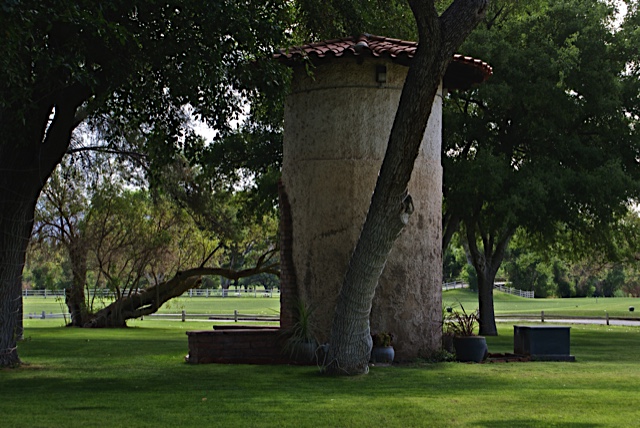If you find yourself in Orange County California with some time to spare, I might suggest you check out this gem of a museum in Santa Ana. The Bowers Museum was introduced to me by my good friends Julie and Dave. They are members and visit the museum often.
My admiration for the place began on the outside when I saw these fantastically tall pine trees on the grounds around the building. I'm not sure what variety they are but they are certainly a unique breed.
I also thought it was amusing to see a sign warning people to watch out for falling pine cones. I tried to spot one but I couldn't see any among the foliage. I wonder just how big they are. I know for a fact that the pine cones of the giant sequoia trees are tiny things about the size of a child's fist.
The museum is known for it's huge collection of Pacific Islands artifacts and highlights three cultural regions of Oceania; Micronesia, Melanesia, and Polynesia.
Here's an attractive fellow I admired. He is called a Flute Stopper and he's designed to convey an intimidating power which he seems to be doing quite well.
He is from the Biwat people who were feared throughout the region for their cannibalism and warrior ways. Surely a group not to be trifled with.
The collections features thousands of pieces created by the Pacific Islands people. It was extremely interesting to see the differences in the craftsmanship of the different tribal communities and to learn about the customs of each group of people.
The oldest part of the museum was built in 1932 and contains displays from the Americas. The land for the museum was donated to the city of Santa Ana by Ada Elvira Bowers and her husband Charles W. Bowers who was a citrus grower and land developer of the era. In addition to the land, they donated $100,000 to begin the building process.
The ceiling in this particular room was a piece of artwork in itself. The carved wood seems to drip from the ceiling down the walls of the room.
In an adjacent room, this painted and carved ceiling stole the show.
Here is a close-up view of the center panel of the ceiling.
Visitors are greeted by this statue of the Spanish explorer, Juan Cabrillo as they enter the museum through the courtyard. It was placed there in 1936 and was the work of the artist Ada Mae Sharpless.
In addition to the vast Oceania collection, the museum is also known for it's traveling exhibits that appear throughout the year. That's always a great way for people in the nearby community to see things from foreign museums around the world.
































